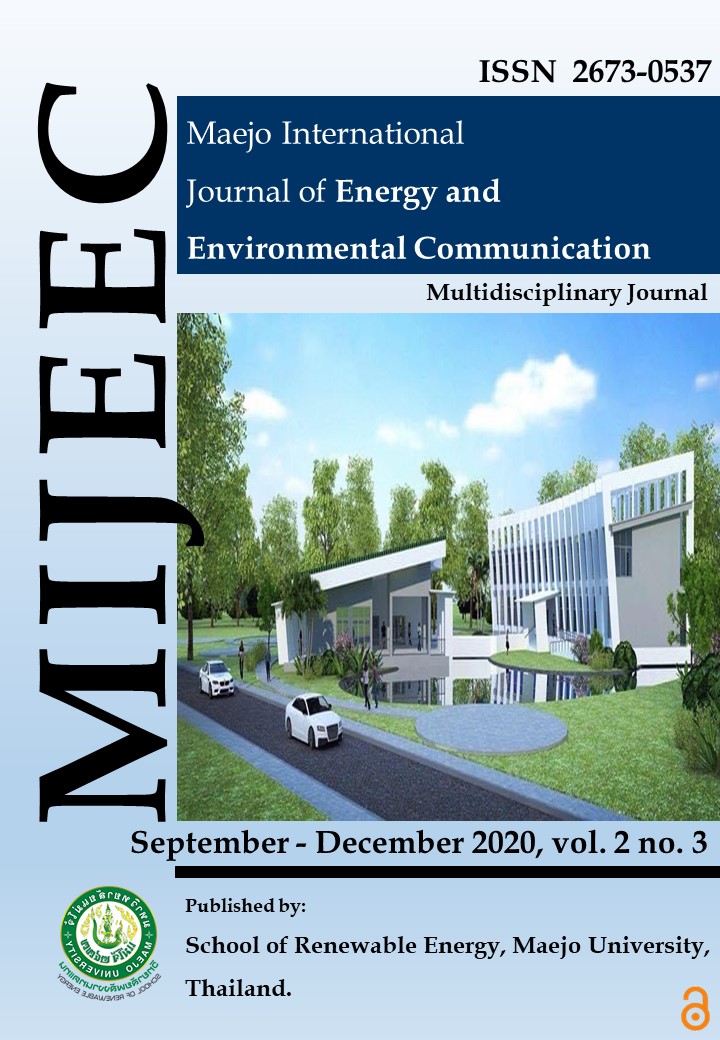Biodiesel production by microalgae Nannochloropsis sp. grown in palm oil mill effluent
Main Article Content
Abstract
A marine microalga, Nannochloropsis sp., was discovered in a water body in Teluk Cempedak, Kuantan, Pahang. In Nannochloropsis sp., for biomass and lipid synthesis, POME was used as a substitute medium. The isolated monoculture was grown in various concentrations of POME (5%, 10%, 15%, and 20%), as well as a standard control medium. Nannochloropsis sp. showed greater cell growth at 10% POME, with a maximum dry biomass of 1.504 g L-1 and extracted 35.9% lipid after 14 days of flask cultivation. Fatty acids namely oleic acid, linoleic acid, palmitic acid, and stearic acid were shown to be prominent in GC-MS analysis. The fatty acid oleic acid has been discovered to be the most abundant (73.40%). POME has the prospective to be used as a growth media for the cultivation of microalgae Nannochloropsis sp.
Article Details
Copyright © 2019 MIJEEC - Maejo International Journal of Energy and Environmental Communication, All rights reserved. This is an open-access article distributed under the terms of the Creative Commons Attribution-NonCommercial- Attribution 4.0 International (CC BY 4.0) License






